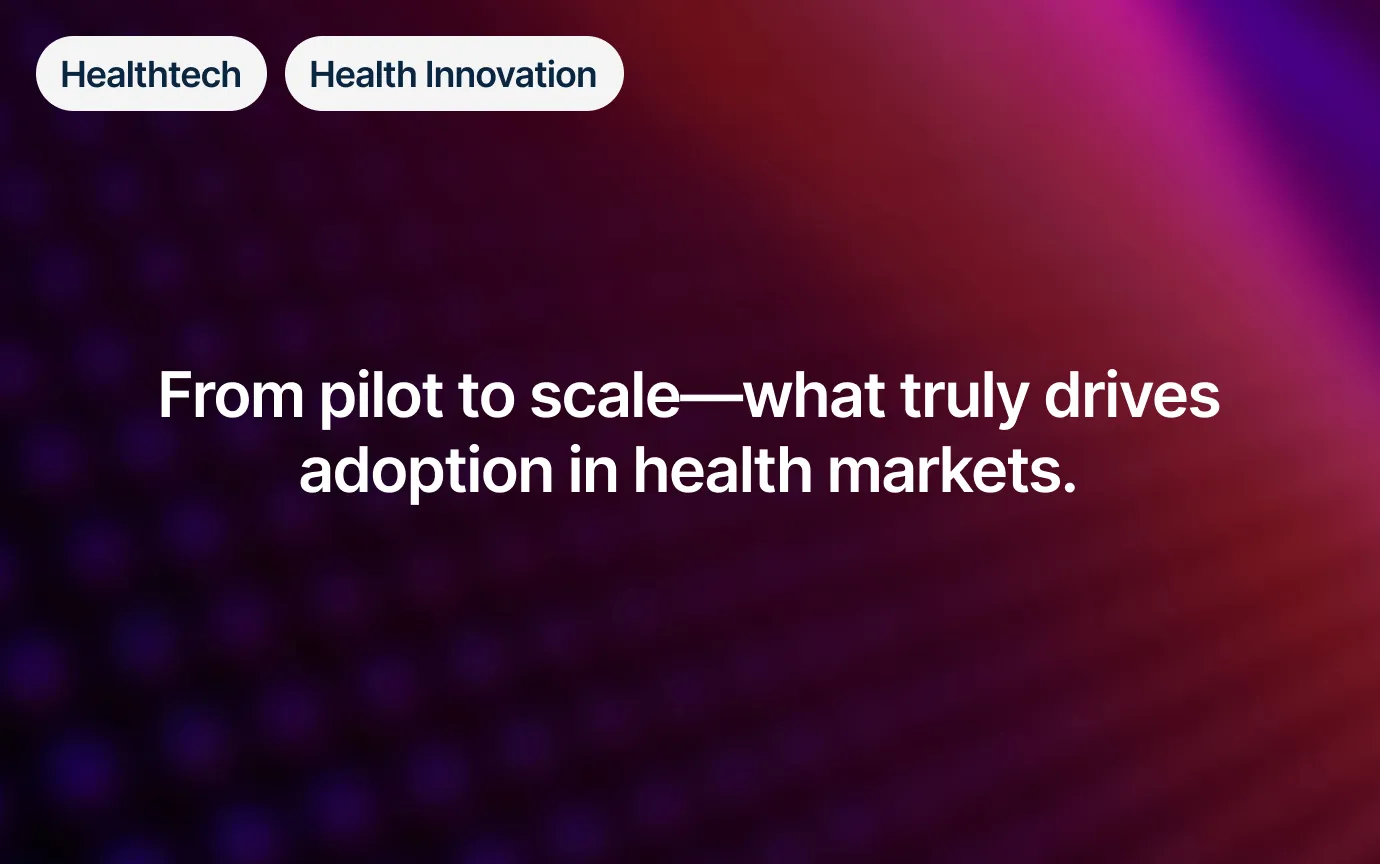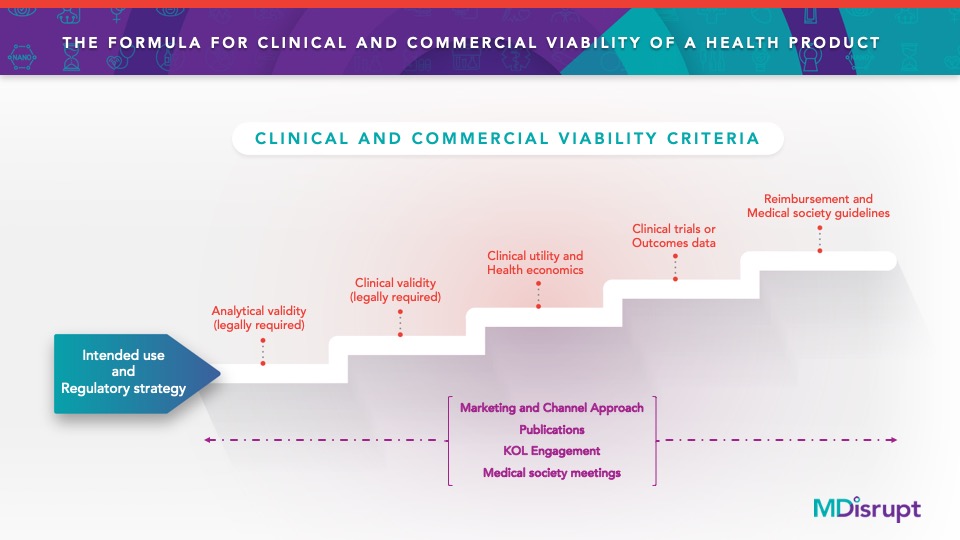
Building a health product or service that will gain widespread adoption requires a long term plan and thoughtful orchestration between your Medical Affairs and Commercial teams. While we show you the formula below, each step of strategy and execution are intertwined over time as milestones are achieved.
This formula is well-known and well-established for traditional healthcare investors and entrepreneurs, but may be less familiar to those from the tech industry. Health tech entrepreneurs are often tempted to skip a step or delude themselves into believing that their product will be so impactful that the medical industrial complex will not require evidence of safety and utility. They are wrong. None of the steps we outline below can be skipped. Instead, entrepreneurial creativity and technology can and should be harnessed to achieve these milestones more quickly than ever before. Combining innovative experts from health and tech increases your chances of getting widespread adoption more quickly.

Above: The necessary steps for widespread adoption of a health product.
Your company will need a statement that clearly describes what the device/test/software is testing, the technology it relies on, why the testing is performed, acceptable sample types (if relevant), and who is or is not an appropriate test subject. This statement guides the performance specifications and development process. It also determines the risk level and complexity of the product, which impacts the regulatory requirements. It is the “North Star” that provides clarity to the product, marketing, medical/scientific affairs, legal, regulatory, and engineering teams.
Meet Regulatory Requirements for Market Entry (this is about the device/test/software itself)
Interventions can be medicinal, surgical, or behavioral. Whatever category the intervention falls into, it must be valid, beneficial, and impactful relative to cost and alternatives.
The medical community is THE most skeptical audience a marketer can encounter. Those in this sector are trained to make data-based decisions. Knowing this, there is an art and a science to timely communication with this audience and showcasing data-driven messages using the appropriate media, channels and spokespeople. Healthcare marketers know how to effectively communicate with medical audiences through a sophisticated combination of engaging their internal medical affairs colleagues, KOLs (Key opinion leaders), and medical societies. They are also experts at generating appropriate marketing materials that can sway even the most cynical medical audiences,
Every health tech company wants widespread adoption for its health product and, as you can see, there is a path to getting there. There is also a community of healthcare experts who would love to help. MDisrupt is the conduit.